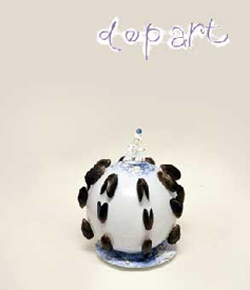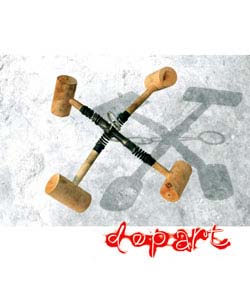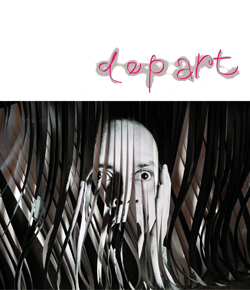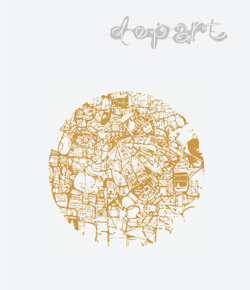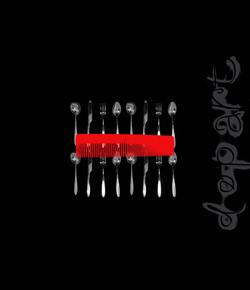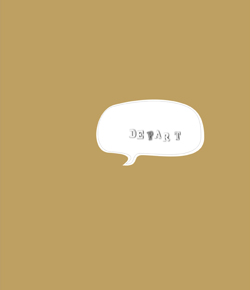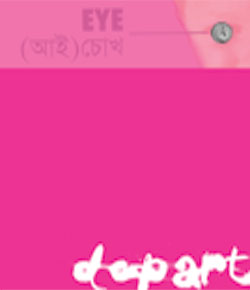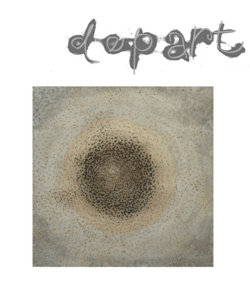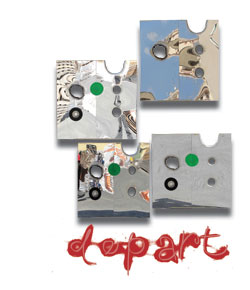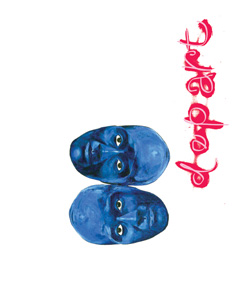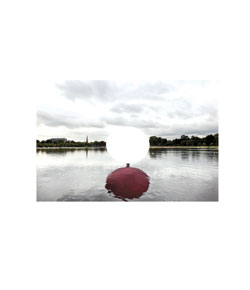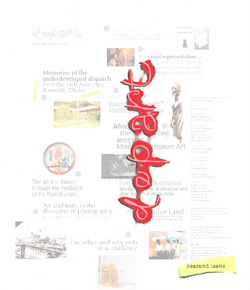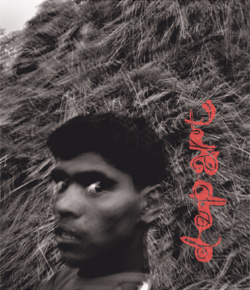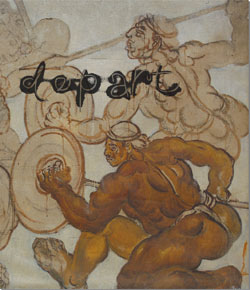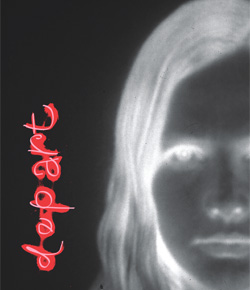book-review
Folk art or the generic art of Bengal?

There are hardly any writings on folk art in Bangladesh. Once in a while you come across just a few books on the subject, providing only superficial and vague understanding of what is generally considered as folk art. This is because of the peripheral position accorded to this form in the field of our art and culture studies. We have slotted this art in the inferior category, which makes sense in a society preoccupied with class distinction. As naming names is the first step towards the development of a value system, resorting to the category 'folk art' can easily be construed as an arbitrary imposition of knowledge with little understanding of the entire gamut of art still being created in the traditional cultural sites, where objects of everyday use easily commingle with objects meant for rituals. Therefore, its introduction to the sphere of knowledge serves as the distinguishing mark creating a chasm between 'art' and 'folk art', assigning separate qualitative value and status to each. The taxonomy that imparts 'art' a formal status, does not embrace 'folk art' within its ambit. The art slated as 'folk' is supposedly rooted in the custom, faith, lifestyle and socio-economic occupations of the common people. Since it is equated with a modest response to the necessities of life springing from unschooled pure taste in a natural process, a simplistic approach guides its classification.

Writer Shawon Akand, has accepted this division in his book, Bangladesher Lokoshilper Dhara (The Genealogy of Folk Art in Bangladesh), even when seemingly declining to enter such a closure. While he says, 'I'm more interested in considering folk art as just art,' he uses this nomenclature to facilitate his defining principles and analytical procedures and continues to address it referentially as folk art.
From a philosophical point of view, definition involves not just simply the meaning of something, to the exclusion of any enquiry into its ontological-cognitive perception and socio-cultural formation. Definitions thus resorted to, serve to bring out the implicit, abstruse and evocative meanings. Shawon offered some questions from this reductive defining bias, yet did not attempt at teasing out answers that illuminates his position.
Essentially, folk art is 'natural' or 'organic' art, because it is created outside the realm of nationalistic paradigm as well as institutional pedagogy. The practitioners of this art belong to communities or heredity lineage and their art is an accumulated manifestation of their lifestyle and mode of production, learned through observation and refined through experience. The ingredients of their art are produced indigenously, extracted from nature, this peculiar proximity with the environ/ecology is what provides the intellectual base of this art form, as its materialist and imaginative source. Shawon avoids this line of argument in his book and opted to adopt the urban version of its exposition.

Divided into eleven chapters, Bangladesher Lokoshilper Dhara has sections on pottery, folk art, weaving, metal work, carpentry, popular urban art and also brief accounts derived from some artists, all of which are collated from field-work and research. According to the writer, 'Comprehensive experience and knowledge acquired through books form the impetus behind this writing.' Primarily, the book is an informative documentation focused on the generic rural art forms now construed as part of the formative traditions of the land. The information amassed here on the traditional cultural products and their producers is an improvement on the regular categorical reports. Yet, the writer's firsthand encounters with artists/artisans and artworks/wares have not been given a new premise through which to rethink (even if within the urban cultural mainstream) the established framework set in motion by the acculturated urbanites – whose knowledge of art is eternally bound up with high-low, rural-urban, and classical-popular binaries.
The first chapter brings to light 'some plain facts about folk arts', where indigenous folk art is viewed through the formula of English folk art. The writer refuses to subscribe to the class-specific image that is inevitably associated with the very category of folk art.
The second chapter deals with 'pottery' about which the writer abruptly concludes by saying that, 'clay-craft has evolved through necessity.' Resorting to the utilitarian theory, upon which this assumption is based, one may focus on the three obviously related categories: 'production', 'distribution' and 'consumption'. But can the word 'necessity' serve to explain the cause behind the artistic flourish a community commits to a place of worship, or an object used in worshipping the gods and goddesses, especially when it captures an elegance extraneous to the usefulness of the object? The images, the statues, the decorative tiles or plaques in mosques and temples – those are not products of bare necessity, but are the conduits through which we may discern the transcendent quality of objects. They are meant to uphold abstract expressions of human values in concrete forms. Clay craft, thus, caters to our finer sensibility, takes us beyond the tangible banality of life to connect with unreachable beauty. Shawon confines himself to some religious and pragmatic application of clay craft, without venturing into the politics of aesthetics.
The third chapter is on 'folk art' which includes paintings on clay pots, plates, pitchers and jugs and also scrolls. Such art forms and their practices, according to archaeological history, are very ancient. The recent archaeological findings at Wari-Bateshwar from 500 BC, and many more examples like those, point to the fact that folk art is not just a rural traditional form. Historical events, religious practices, festivals, social occasions, conventions and communal lore – all combine to compose and recreate the experiences through which an array of artistic imagery and devices are arrived at. They are the obvious outcome of a collective striving towards sublimation of material existential aspiration. In those items of daily use, the pots and plates, people rediscover the sublime aspects of their life. Now-a-days, decorative designs have been added to the modern paintings. The writer dwells on it only in passing in the introduction.

The art of weaving is analyzed in the fourth chapter, basically in the form of weaving of cloths, with thread and loom as the main production materials, aside from other branches of craftsmanship, where ingredients are sourced from nature – like cane, slit bamboos, leaves, fibers. This deltaic region has been marked as an agricultural heaven, therefore the original art materials are mostly organic, plant related, and the aesthetic forms developed by the communities across this fertile land have thrived due to easy access to raw materials, in addition to, human labour. The symbiotic relation between the people and the climate, the source of the ‘memes’ that galvanize the members of a community into aesthetic actions, remain unexplored in Shawon's writing. He has tabled observations extricated from different historians and presented the material history of production and social ranking of the weavers communities with some additional information on the tribal textile weavers.
Other forms of weaving mentioned here are muslin, rug, cane mats, embroidered quilts and designed macramé.
In the book, the writer's consideration of metal craft is very basic. This section is primarily focused on the works of blacksmiths, goldsmiths and braziers communities. But the discussion on carpentry, especially wood-engraving has been very extensive. Etching on stone could have been included in this category. This was extensively used in the structures of earliest architecture, sculpture, utensils and luxury items.

The book locates the genre of folk art in multiple locales – the places it traverses and appears in divergent forms, including loci such as urban rickshaw, truck and transport vehicles. On this form of art, one which is often dubbed as travelling art, the writer dwells on the description of typology, instead of contexualizing it, or giving it an analytical treatment. The investigation is therefore without any investigative query. The writer has explored history, gone through numerous books, encountered actual art and artists, and yet, due to the fact that the book is framed within the bounds of an uncritical survey of the cultural landscape, the reader is left with an extensive index rather than an extensive research material.
One last caveat regarding the epithet 'folk art': does it exclude the rural praxis from the generic, all-encompassing Bengal art by enforcing a division between rural/urban, high art/low art etc.? Whatever art objects the writer, whose love's labour is this sizable tome, has put forward, are they all about the style-structure-form belonging to a homogeneous field? This question remains unanswered.
The best parts of the book are the records of statements by artists working at field level immersed in the age-old processes – which mutate slowly but organically. They certainly touch on some pertinent issues – problems and solutions related to this art form, providing the cues to its future survival in a changed society. All in all, this book will be helpful in acquiring some basic ideas about the generic art forms of Bangladesh, no matter how cursory that might be.
Translated by SITARA A JABEEN




